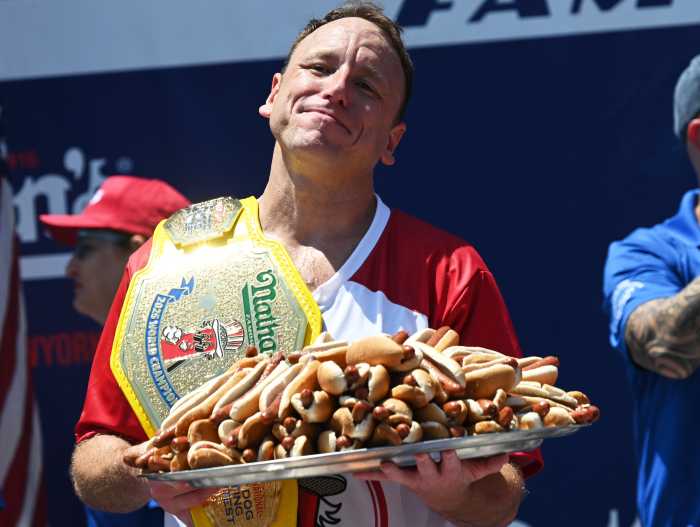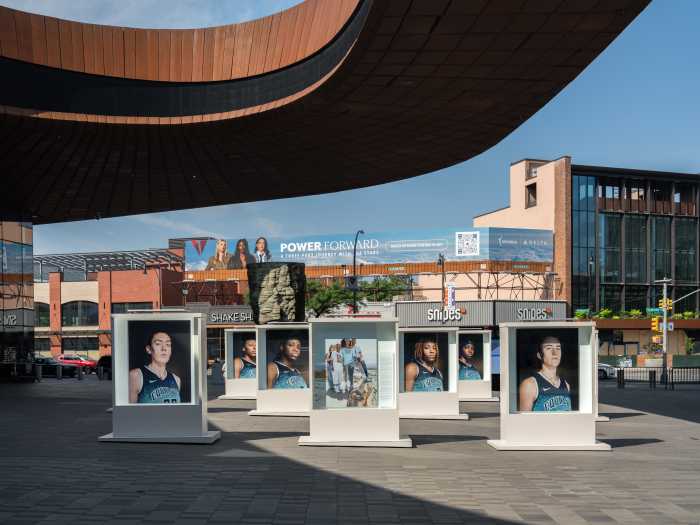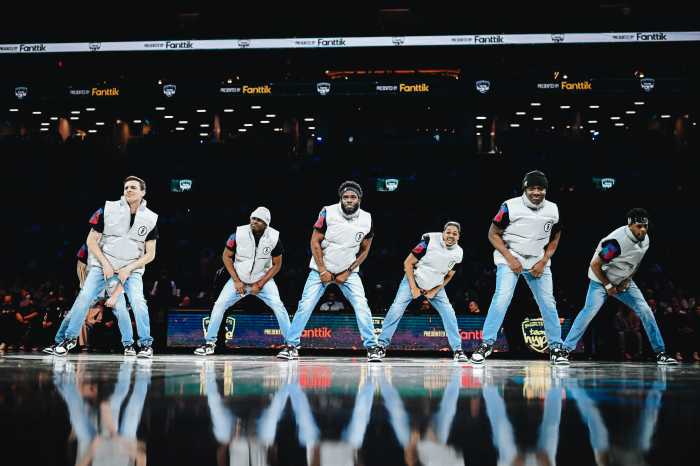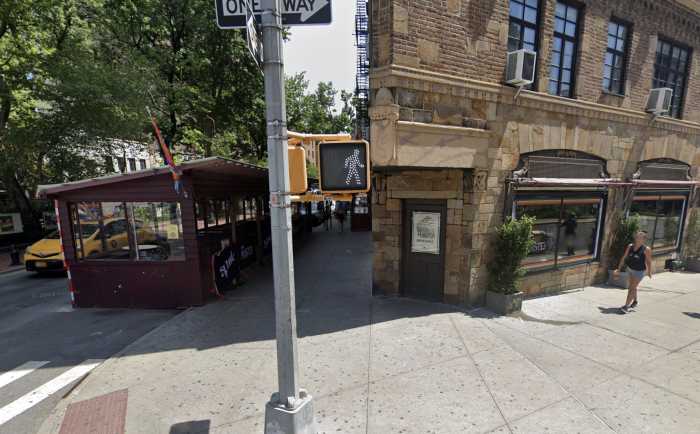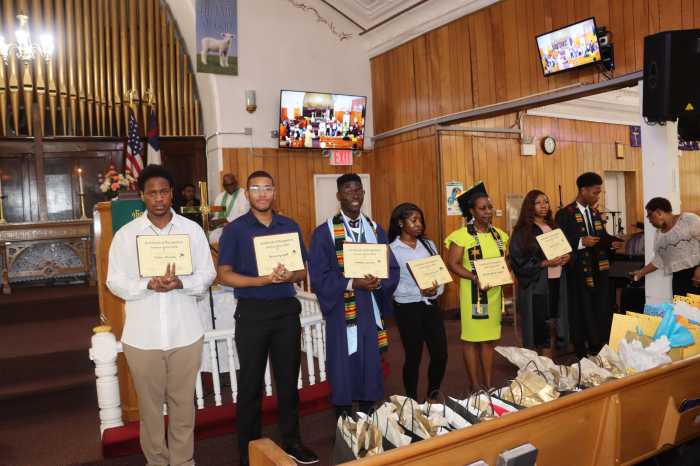Brooklyn invaded Otsego County, N. Y., this past weekend. Patrick Witt played general to his band of 50-plus Brooklyn Cyclones fans who left the county of Kings on Saturday for a bus incursion to Oneonta, N.Y. — population 13,292 — and home of the Tigers.
The other Otsego County venue occupied by Witt’s troops was Cooperstown Village — population 2,026 — and home to the National Baseball Hall of Fame. That would come Sunday.
Let’s start with Saturday’s landing at Damaschke Field in Oneonta.
Baseball has been played at the site of Damaschke Field for longer than the age of most fans there Saturday — the first field here was built in 1906.
Most of the 449 Oneonta fans were there when the Brooklyn bus arrived. Attired in Cyclones caps and T-shirts and with a large Cyclones’ sign, the 51 bus riders and four Cyclones fans who drove in cars entered foreign territory when they got to the main gate — actually the only fan gate at Damaschke Field. Walking through the 4-foot opening in the chain link fence, the Brooklynites were met with smiles from the ticket taker. Perhaps his smile was a ruse.
Now for the fan reaction: due to the invaders’ obvious preference for the visiting team, perhaps it would be shouted invective, a euphemism for “Brooklyn stinks! Brooklyn stinks!” something akin to the mutual greetings of unprintable verbs hurled between Yankee and Red Sox fans.
No.
Instead, the Oneonta fans chattered quietly with each other or said hello to the Brooklyn arrivals. Where was the angst? Where was the hostility?
The Cyclone fans quickly moved to their seats in the third base stands behind the Brooklyn dugout. No one even stopped for a beer — the game was about to begin and they didn’t want to miss the first pitch. Still, if they had sought one out, they’d be out of luck — at Damaschke Field, no beer is sold.
The Cyclones were jammed into their dugout — a dugout about half the size of the one at Keyspan Park. The outfield fences were wooden. The grandstand behind the plate was wooden. In the area behind right field in foul territory — right where the Parachute Jump would be outside Keyspan Park — was an old grain elevator. Beyond leftfield here — about where Nathan’s would be on Surf Avenue in Brooklyn, was Hodges Pond, though it is not named after Gil. Beyond left-center field — roughly where Brighton Beach would be — were the foothills of the Catskill Mountains, showcasing a farm and a red barn. Any Cyclones fan, even one devoid of a doctorate in geography, sensed that this county was certainly not Kings.
The game began and there was verbal interaction between the Brooklynites and the local supporters. Were those grimaces on these potential combatants faces? No, they were smiles. What was going on?
Who were these Oneonta partisans?
One was named Joe Ryan. He lived just outside Oneonta now. He sat near the Brooklyn fans.
“I’m from Red Hook, Brooklyn. Third and Smith, right by the Carroll Street station,” said Ryan. “I just saw Brooklyn play on TV, last week, on cable. I’ve been up here 20 years, but I was born and raised in Brooklyn.”
He shared some memories.
“On a Saturday night, Nathan’s would sponsor a contest at the Coney Island batting cages, and if anyone hit it over the screen, they used to get a salami. I used to see Gil Hodges hit there.
“Last year, I went back to where Ebbets Field used to be, and there’s a big apartment house there and on the side of the apartment house was a big sign. You know what it said? ‘No ball playing allowed.’”
John DeMarco is another former Brooklynite who now lives in Oneonta. He grew up on Fourth Avenue and 59th Street in Sunset Park. He is also seated a few yards from the Brooklyn invaders. He donates his time to the Oneonta unofficial Website, which he runs. His grandfather was a season ticket holder for the Dodgers.
“When they left,” says DeMarco, “ he was upset.” The way DeMarco says it, you know that “upset” is a gross understatement.
DeMarco adds, “There’s a lot of people from Brooklyn up here.”
Later, I visited with Sam Nader, the majority owner of the Oneonta Tigers. He looks half a generation younger than his soon to be 84 years. We sat in the team’s office. This was a wooden building about the size of a dining room.
“I’m an Oneonta native, played some college baseball, and I was involved as a member of the board of directors of our team in the Canadian-American League. But baseball left, and one of my goals as mayor here was to bring back professional baseball; I did and we had a team affiliated with the Red Sox. Then we became affiliated with the New York Yankees — for 32 great years. They asked me if I wanted to move the franchise to Staten Island, but I didn’t; I wanted to stay here. We’re the only professional baseball team that doesn’t sell beer by choice. We’ve all seen what it does to some people’s mouths, and we don’t need it.
“A few years ago I was offered three million for the team, but I turned it down. I knew the first they’d do is move the team.”
On Sunday, the Brooklyn tour was preparing to go to the Hall of Fame, located about a half-hour from Oneonta. Andrew Mandelker waited for the bus to leave from the group’s hotel. Andrew, along with Patrick Witt and Alec Daitsman, drove eight hours from Brooklyn to Jamestown, New York to see the first-ever Cyclones game in 2001.
At the Hall of Fame, the Brooklyn influence was everywhere. Look at the Hall of Fame members. Old timers like Zack Wheat and Casey Stengel played for Brooklyn. So did “Boys of Summer” players Pee Wee Reese, Duke Snider, Jackie Robinson and Roy Campanella. Players who were just starting their careers in Brooklyn are members — Sandy Koufax and Don Drysdale. Brooklyn managers like Leo Durocher, Walter Alston and Uncle Wilbert Robinson are inductees as are Brooklyn announcers Red Barber, Vin Scully and Ernie Harwell.
Even Babe Ruth was a Brooklyn Dodgers coach.
Henry Chadwick, credited as the first major baseball writer, was a writer for Brooklyn newspapers and is buried in Green-Wood Cemetery. Outside the Hall of Fame library is a famous battery. It’s a set of bronze statues of pitcher Johnny Podres and catcher Roy Campanella, the battery that was instrumental in winning Brooklyn’s only World Series in 1955.
The Brooklyn fans even saw an exhibit on catcher Gary Carter — who is to be inducted later this month. Carter is the answer to the question: Who is the first Brooklyn Cyclone to be elected to the Hall of Fame?
Sure, it is a trick question, because Carter coached first base for a few innings in a Cyclones’ game.
Announcer Warner Fusselle reports that Cyclones coach Roger LaFrancois played in the longest game in professional baseball history when LaFrancois was a member of the Pawtucket team, but the exhibit featuring a box score of the game was temporarily down because of renovations.
On Monday, the Brooklyn Cyclones players toured the Hall of Fame. They took lots of photos and videos. Bronx shortstop Travis Garcia bought two baseball caps. One was a New York Knights’ hat, as seen in the movie The Natural. The other hat was a Brooklyn Dodger cap.
Brooklyn fans had invaded Otsego County. They saw some good baseball and toured baseball’s shrine.
The fans and management of the Oneonta Tigers were friendly hosts and it turned out that many Brooklynites were already in Otsego County — at the game and in the Hall of Fame.
The Brooklyn tour members had fun and learned a lesson. It was the sometimes-repeated quote: “We have met the enemy and they are us.”



